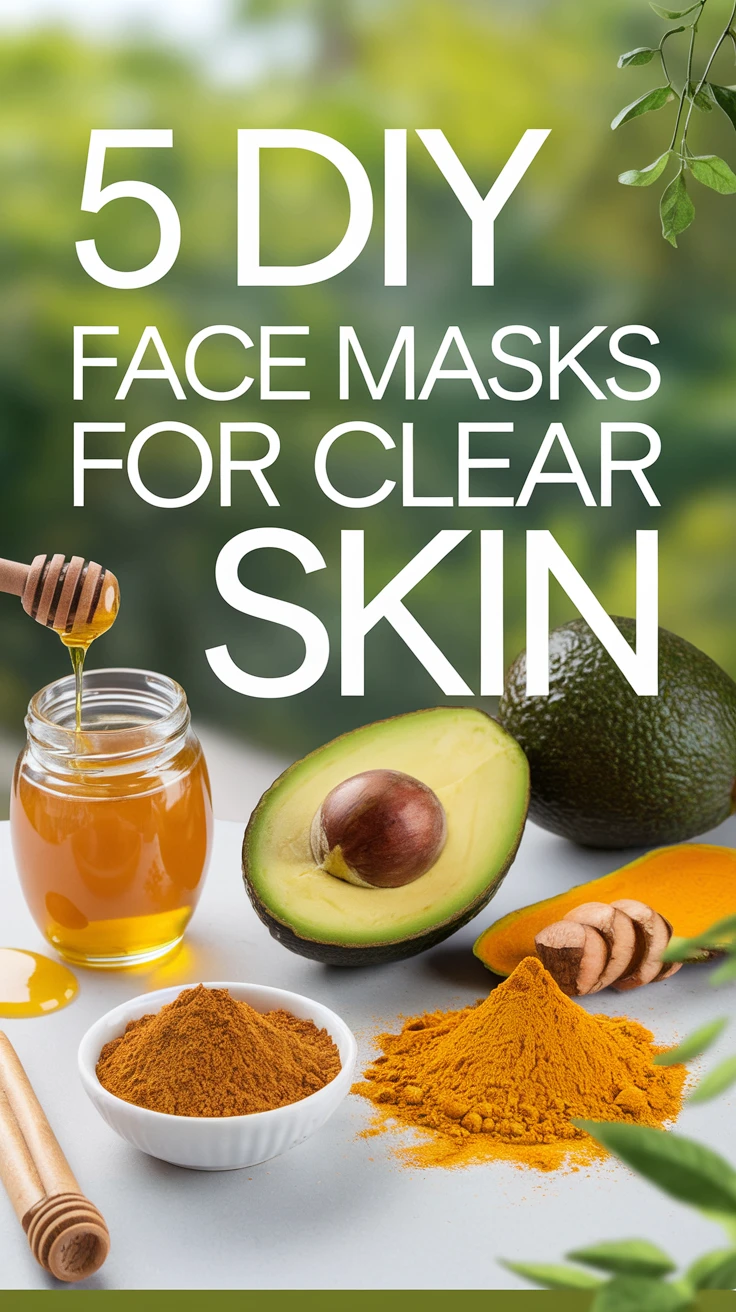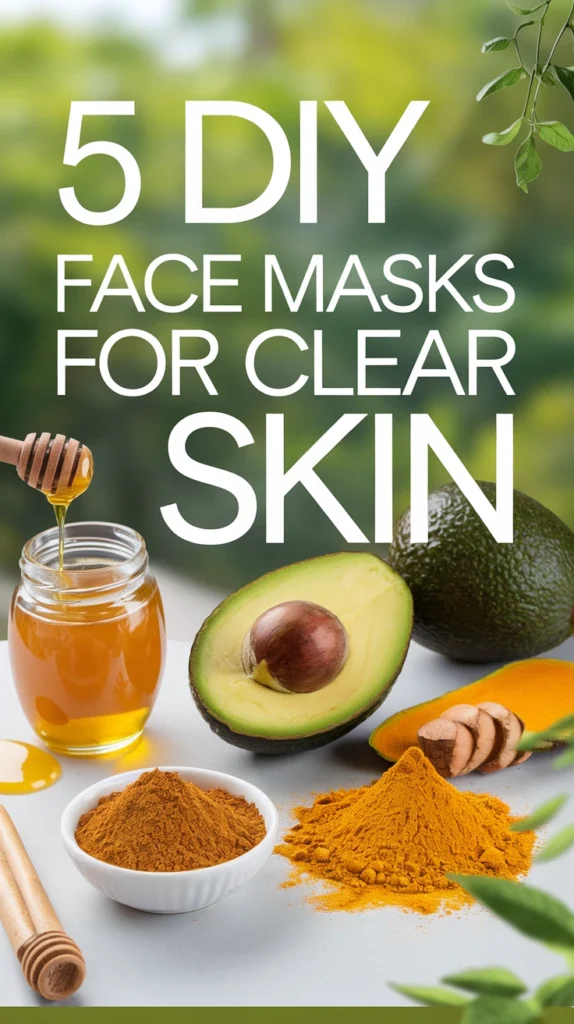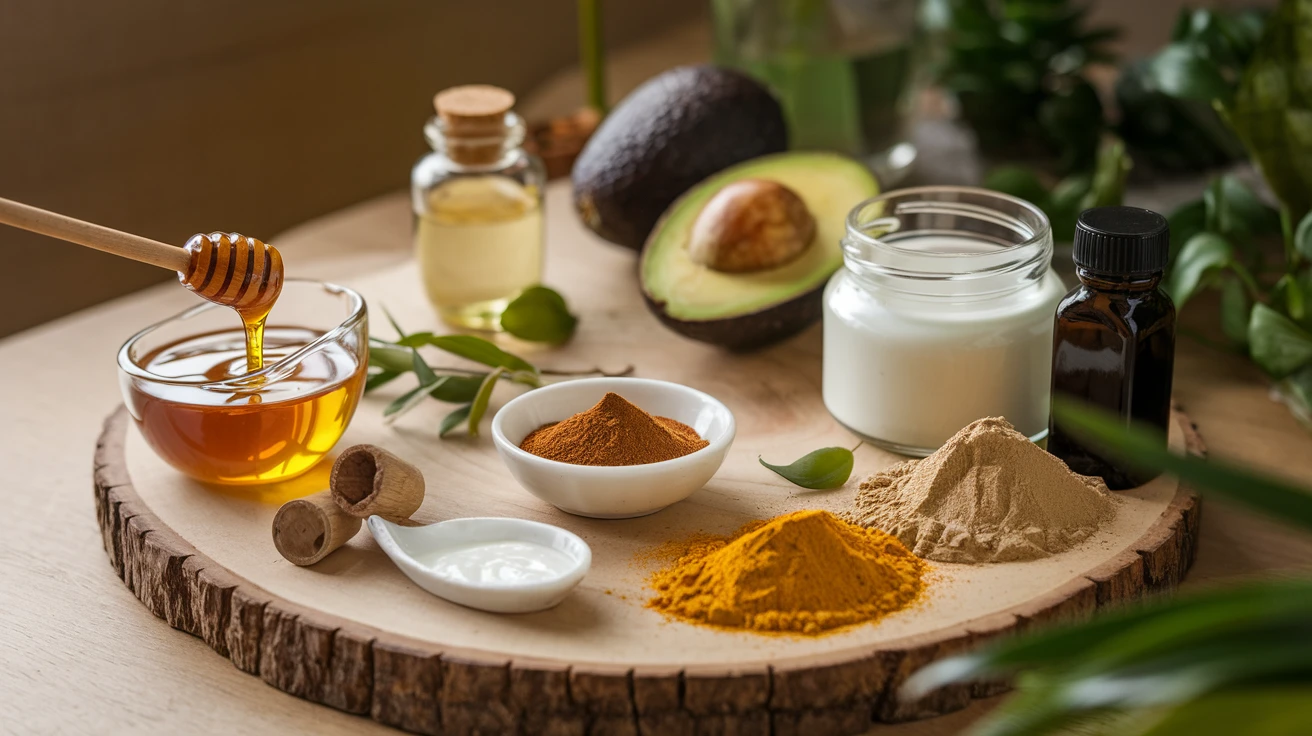
DIY Face Masks for Clear Skin
Struggling with pesky breakouts and blemishes? You’re not alone. While there’s no shortage of skincare products promising clear, radiant skin, many come with hefty price tags and ingredient lists that read like chemistry textbooks. That’s where DIY face masks for clear skin come to the rescue! These homemade remedies use natural ingredients that are gentle on your skin and your wallet.
Creating your own face masks allows you to control exactly what goes onto your skin, avoiding harsh chemicals that might actually worsen breakouts. Plus, most of these ingredients are probably already sitting in your kitchen pantry, waiting to transform your skin care routine. Whether you’re dealing with occasional pimples or more persistent acne, these natural masks can help calm inflammation, reduce redness, and promote clearer skin.
- Natural ingredients mean fewer irritants and chemicals
- Budget-friendly alternatives to expensive products
- Customizable recipes based on your skin’s specific needs
- Quick and easy to prepare with common household ingredients
1. Honey and Cinnamon Anti-Acne Mask
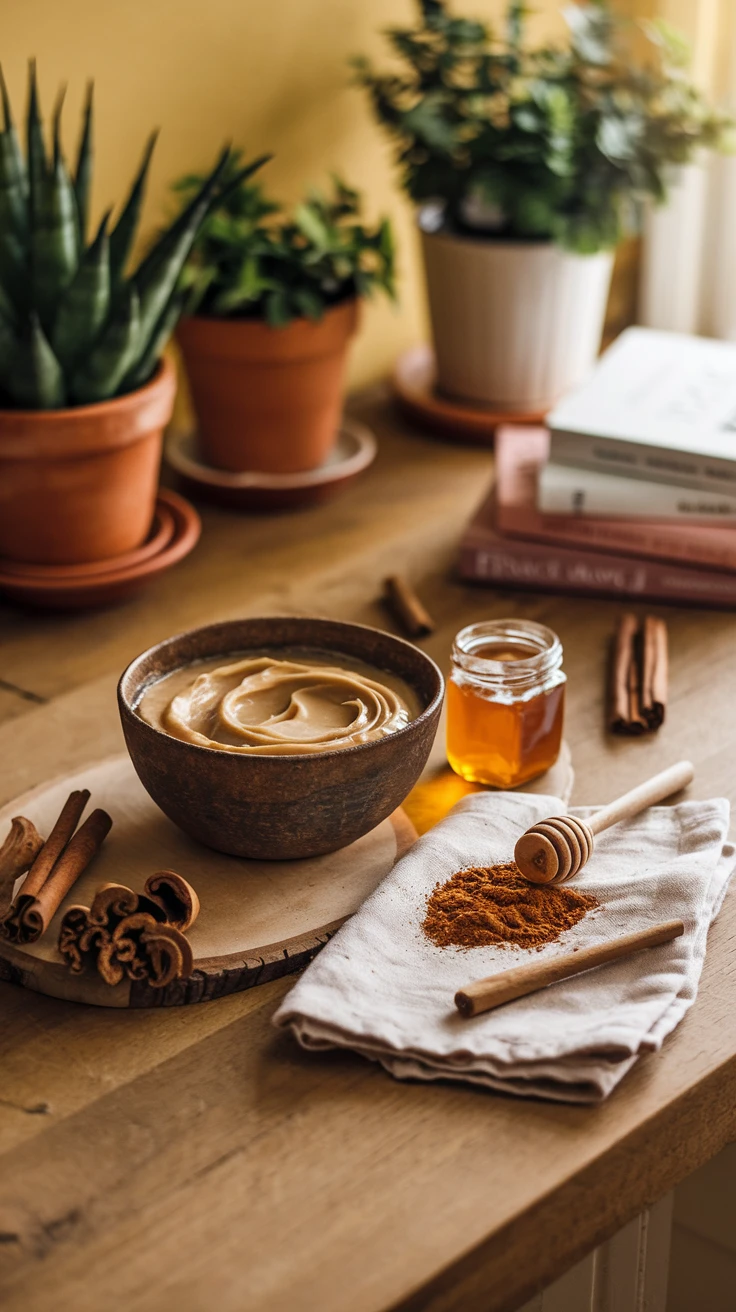
The honey and cinnamon mask is a powerhouse combination for fighting breakouts. Honey isn’t just sweet for your taste buds—it’s also a natural antibacterial agent that helps kill the bacteria responsible for acne. Meanwhile, cinnamon improves circulation and brings blood and oxygen to the skin’s surface, which can help heal existing blemishes and prevent new ones from forming.
- Honey contains natural antibacterial properties that fight acne-causing bacteria
- Cinnamon reduces inflammation and redness associated with breakouts
- Both ingredients help unclog pores and remove impurities
- The combination creates a gentle exfoliating effect
How to Make and Apply:
- Mix 2 tablespoons of raw honey with 1 teaspoon of cinnamon powder
- Stir until you have a smooth, paste-like consistency
- Cleanse your face before applying the mask
- Apply a thin layer to your face, avoiding the eye area
- Leave on for 10-15 minutes
- Rinse thoroughly with warm water and pat dry
This simple yet effective mask can be used once or twice a week to help keep breakouts at bay. The sticky texture of honey helps the mask adhere to your skin, allowing the active ingredients to penetrate deeply. Many users report noticing reduced redness and inflammation after just one application, with more significant improvements in skin clarity after consistent use.
![I'm from] Honey Mask 4.23oz | wash off type, real honey 38.7%, Mature skin, Deep moisturization, Nourishment,and Clear Complexion.](https://m.media-amazon.com/images/I/4114n6Mv6UL._SL500_.jpg)
View on AmazonAs an Amazon Associate, I earn from qualifying purchases.

View on AmazonAs an Amazon Associate, I earn from qualifying purchases.
Pro tip: For enhanced antibacterial properties, use Manuka honey if available. While it’s more expensive than regular honey, its potent antimicrobial effects make it worth the investment for acne-prone skin.
2. Oatmeal and Yogurt Soothing Mask
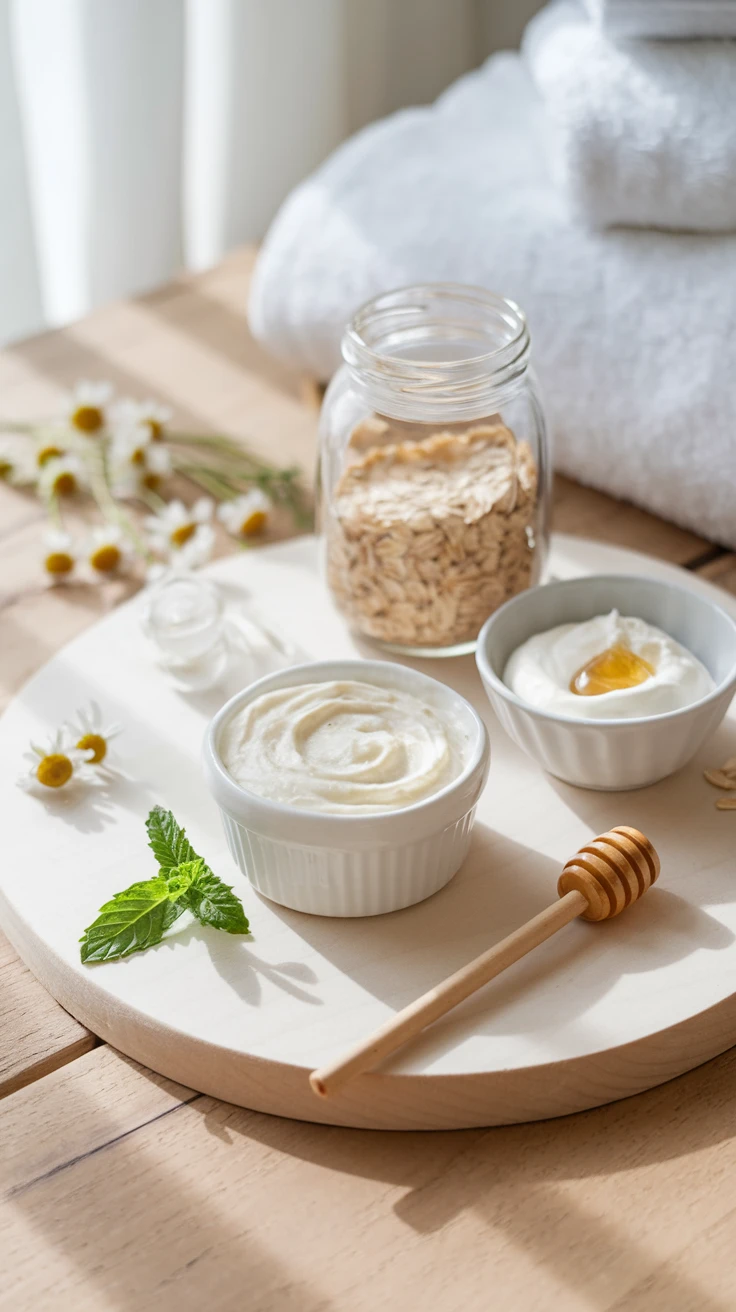
When your skin is irritated and breaking out, sometimes what it needs most is gentle, soothing care. Enter the oatmeal and yogurt mask—a calming remedy that reduces inflammation while providing gentle exfoliation. This DIY face mask for clear skin is particularly beneficial for those with sensitive skin who find other acne treatments too harsh.
- Oatmeal absorbs excess oil and exfoliates dead skin cells
- Yogurt contains lactic acid that gently dissolves impurities
- Probiotics in yogurt help balance skin’s microbiome
- The combination provides hydration without clogging pores
How to Make and Apply:
- Grind 1/4 cup of plain oats into a fine powder using a food processor
- Mix with 2 tablespoons of plain, unsweetened yogurt
- Add 1 teaspoon of honey for extra antibacterial benefits (optional)
- Apply to clean skin in circular motions
- Leave on for 15-20 minutes
- Rinse with lukewarm water, massaging gently for extra exfoliation
This mask offers dual benefits: immediate relief from irritation and long-term improvement in skin texture. The oatmeal particles absorb excess sebum while providing gentle exfoliation, and the yogurt’s lactic acid helps dissolve dead skin cells that can clog pores. After rinsing, your skin feels noticeably softer and calmer, with reduced redness around active breakouts.

View on AmazonAs an Amazon Associate, I earn from qualifying purchases.

View on AmazonAs an Amazon Associate, I earn from qualifying purchases.
Pro tip: Keep the oatmeal slightly coarse rather than completely powdered for enhanced exfoliation. If your skin is extremely sensitive, blend the oats into a very fine powder to minimize physical scrubbing.
3. Turmeric and Milk Brightening Mask
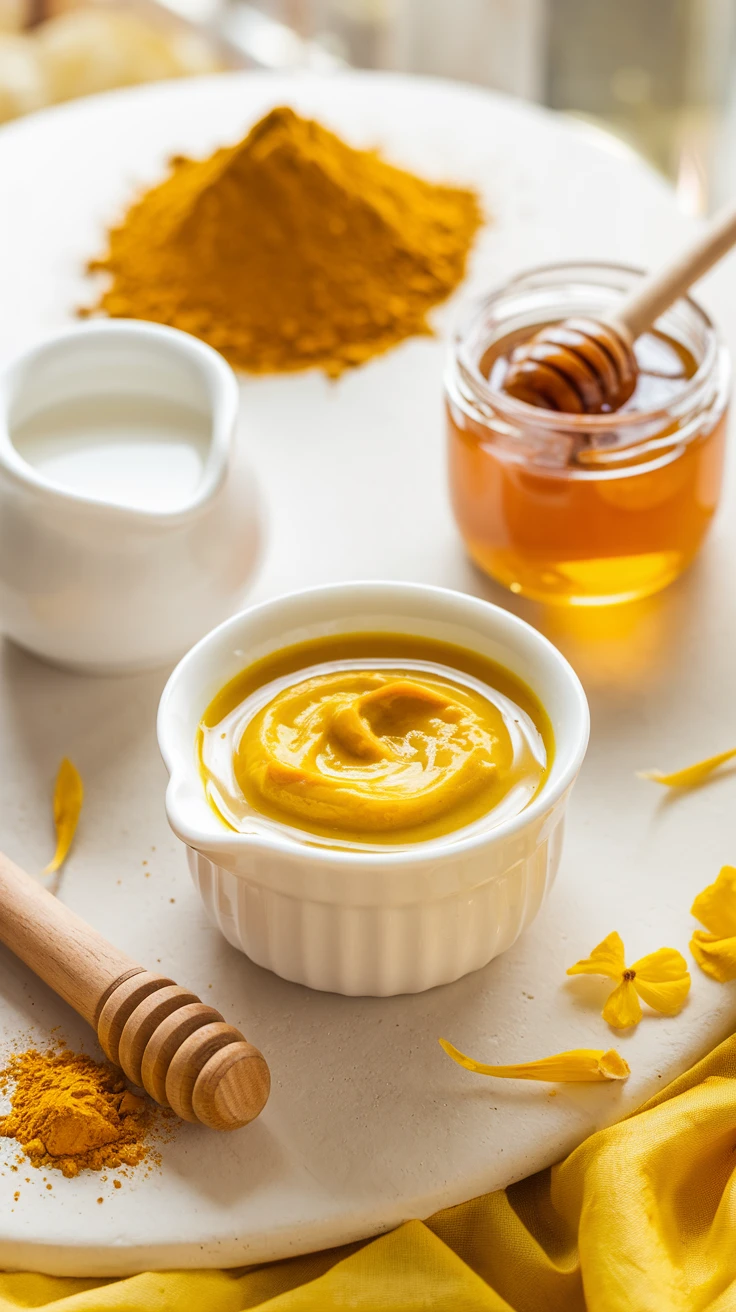
Turmeric has been used in Ayurvedic skincare for centuries, and for good reason. This vibrant yellow spice contains curcumin, a compound with powerful anti-inflammatory and antioxidant properties that can help combat acne and fade post-breakout marks. Combined with milk, which contains lactic acid, this DIY face mask for clear skin addresses both active breakouts and the hyperpigmentation they leave behind.
- Turmeric reduces inflammation and redness of active breakouts
- Curcumin in turmeric has antibacterial properties that fight acne-causing bacteria
- Milk gently exfoliates with natural lactic acid
- The combination helps fade post-acne dark spots
How to Make and Apply:
- Mix 1 teaspoon of turmeric powder with 2 tablespoons of milk
- Add 1/2 teaspoon of honey for extra binding (optional)
- Stir until you have a smooth, yellow paste
- Apply to clean skin, avoiding the eyebrows and hairline (turmeric can stain)
- Leave on for 15 minutes or until dry
- Rinse thoroughly with warm water
This golden mask works wonders on inflamed skin, calming angry pimples while simultaneously brightening your overall complexion. The milk’s lactic acid gently dissolves dead skin cells while the turmeric tackles inflammation at its source. Regular use can help prevent new breakouts while fading the marks left by old ones, resulting in clearer, more even-toned skin.

View on AmazonAs an Amazon Associate, I earn from qualifying purchases.

View on AmazonAs an Amazon Associate, I earn from qualifying purchases.
Pro tip: Turmeric can temporarily stain lighter skin tones yellow. To prevent this, add a few drops of oil to your cleanser when removing the mask. If staining occurs, it usually fades within a few hours. For those with very fair skin, reduce the amount of turmeric to 1/2 teaspoon.
4. Avocado and Tea Tree Oil Nourishing Mask
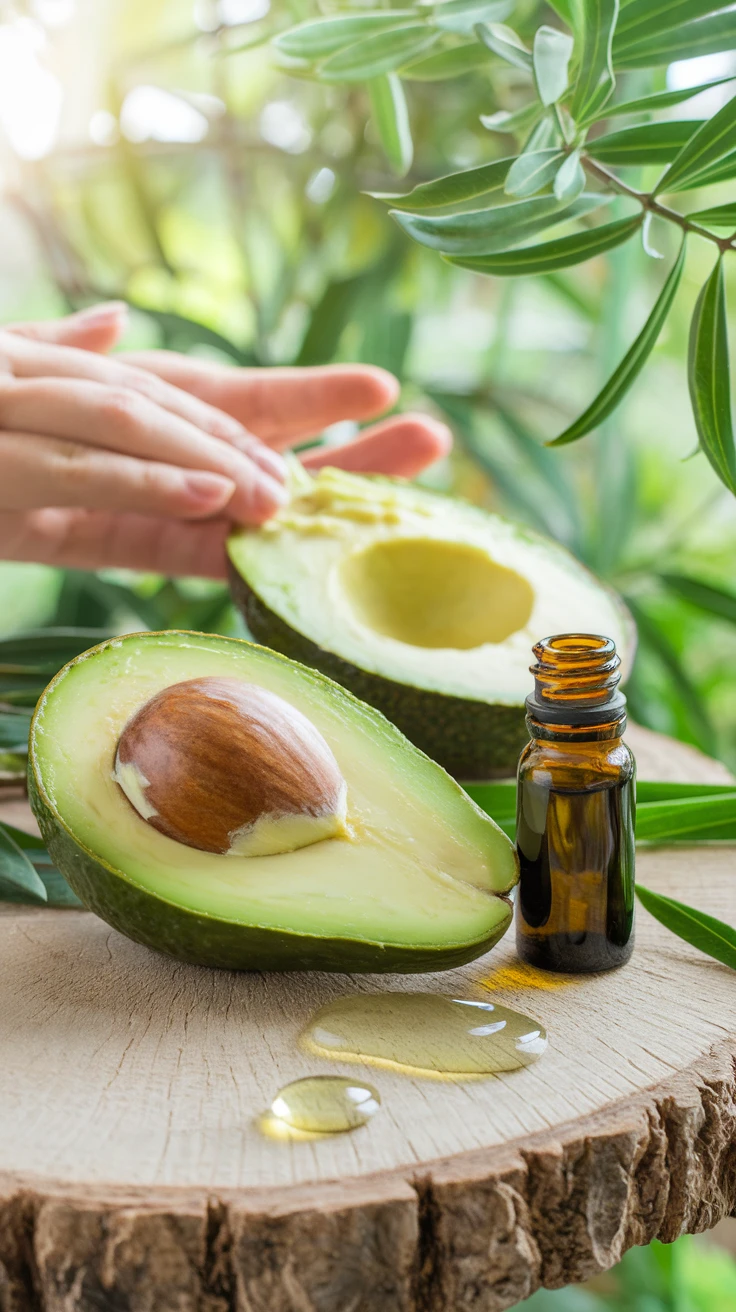
Acne-prone skin still needs moisture—in fact, dehydration can trigger excess oil production, leading to more breakouts. This avocado-based mask delivers hydration without heaviness, while tea tree oil provides potent antimicrobial benefits. It’s the perfect DIY face mask for clear skin when you’re dealing with both breakouts and dryness simultaneously.
- Avocado provides moisture and essential fatty acids without clogging pores
- Tea tree oil has proven antimicrobial effects against acne-causing bacteria
- Vitamin E in avocado helps heal damaged skin
- The combination balances oil production while fighting bacteria
How to Make and Apply:
- Mash 1/2 ripe avocado until completely smooth
- Add 2-3 drops of tea tree essential oil
- Mix in 1 teaspoon of honey to help bind ingredients (optional)
- Apply to clean skin, focusing on areas prone to breakouts
- Leave on for 15-20 minutes
- Rinse with cool water and pat dry
This mask strikes the perfect balance between fighting acne and nourishing skin. The healthy fats in avocado penetrate deeply to hydrate without leaving a greasy residue, while tea tree oil works to eliminate bacteria. After using this mask, skin feels supple and nourished yet clearer, with visibly calmed inflammation around existing blemishes.

View on AmazonAs an Amazon Associate, I earn from qualifying purchases.

View on AmazonAs an Amazon Associate, I earn from qualifying purchases.
Pro tip: If you have sensitive skin, dilute the tea tree oil first by mixing it with a few drops of jojoba oil before adding it to the avocado. This reduces the risk of irritation while still providing antimicrobial benefits.
5. Clay and Apple Cider Vinegar Detoxifying Mask
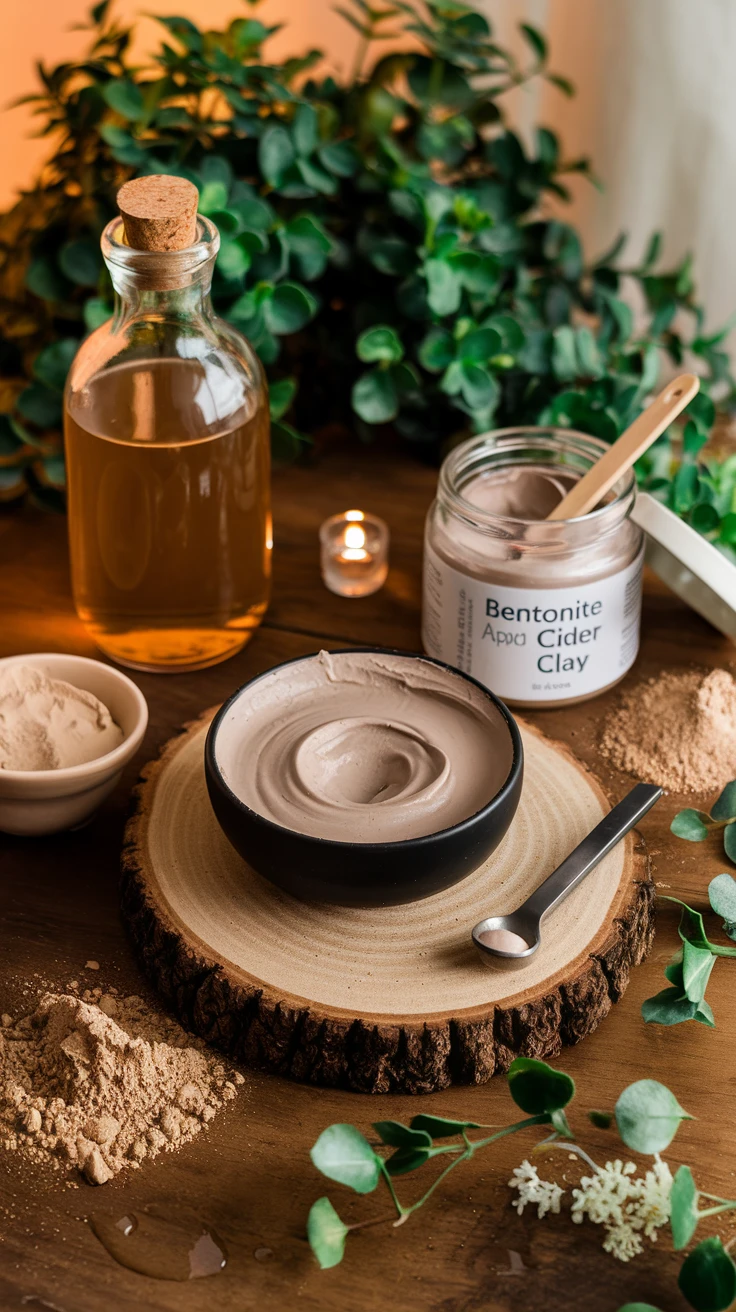
When pores are clogged with excess oil and debris, breakouts are almost inevitable. This powerful detoxifying mask combines bentonite clay, which draws impurities from deep within pores, with apple cider vinegar, which helps balance skin’s pH and contains natural acids that dissolve dead skin cells. It’s the ultimate DIY face mask for clear skin when you need a deep cleanse.
- Bentonite clay absorbs excess oil and draws out impurities
- Apple cider vinegar contains natural alpha-hydroxy acids that exfoliate
- The combination helps shrink enlarged pores
- Helps prevent future breakouts by removing pore-clogging debris
How to Make and Apply:
- Mix 1 tablespoon of bentonite clay with 1 tablespoon of raw, unfiltered apple cider vinegar
- Stir with a non-metal spoon (metal can reduce clay’s effectiveness)
- Add a few drops of water if the mixture is too thick
- Apply to clean skin, focusing on oily areas
- Leave on until almost dry but still slightly tacky (about 10-15 minutes)
- Rinse thoroughly with warm water
This mask creates a noticeable “pulsing” sensation as it dries, which is the clay working to draw out impurities. After rinsing, pores appear visibly smaller and skin feels deeply cleansed. While your face might look slightly red immediately after removal (due to increased circulation), this typically subsides within 30 minutes, leaving behind clearer, more refined skin.

View on AmazonAs an Amazon Associate, I earn from qualifying purchases.

View on AmazonAs an Amazon Associate, I earn from qualifying purchases.
Pro tip: If you have dry or sensitive skin, use this mask only on your T-zone or other oily areas, and limit use to once a week. Follow with a hydrating moisturizer to prevent over-drying.
Key Takeaways
- Natural DIY face masks can effectively combat breakouts without harsh chemicals
- Different masks target various aspects of acne: bacteria, inflammation, excess oil, and clogged pores
- Most effective ingredients for clear skin include honey, cinnamon, turmeric, clay, and tea tree oil
- Consistency is key—use these masks 1-2 times weekly for best results
- Always patch test new ingredients, especially if you have sensitive skin
Conclusion
Creating your own DIY face masks for clear skin isn’t just economical—it’s empowering. By harnessing the power of natural ingredients, you can address breakouts effectively without exposing your skin to potentially irritating chemicals. Each of these five masks targets different aspects of acne, from killing bacteria to reducing inflammation and balancing oil production. Experiment with these recipes to find which works best for your skin type and concerns, and remember that consistency is key when it comes to achieving and maintaining clear skin. Your journey to a clearer complexion might be as close as your kitchen pantry!
Frequently Asked Questions
1. How often should I use these DIY face masks for clear skin?
For most skin types, using these masks 1-2 times per week is ideal. Using them too frequently can disrupt your skin’s natural balance. If you have particularly sensitive skin, start with once a week and gradually increase frequency if your skin responds well.
2. Can I store these DIY masks for later use?
Most of these masks are best when used immediately after preparation. The active enzymes and nutrients in fresh ingredients begin to degrade quickly. If you must store them, the clay mask can be kept in an airtight container in the refrigerator for up to 3 days, but others should be made fresh each time.
3. Will these masks work for all skin types?
While these masks contain gentle, natural ingredients suitable for most skin types, everyone’s skin is different. The honey-cinnamon and oatmeal-yogurt masks are generally good for all skin types. The clay mask is best for oily skin, while the avocado mask works well for drier or combination skin. Always patch test first!
4. How long before I see results from using these DIY face masks?
You may notice immediate benefits like reduced redness or a clearer appearance after just one use. However, consistent use over 3-4 weeks is typically needed to see significant improvement in overall skin clarity and reduction in breakouts.
5. Can I use these masks if I’m already using acne medication?
If you’re using prescription acne treatments, consult with your dermatologist before incorporating these masks into your routine. Some ingredients might interact with medications like retinoids or benzoyl peroxide. Generally, it’s best to use these masks on days when you’re not applying stronger treatments.
